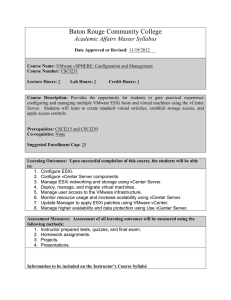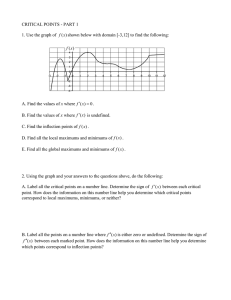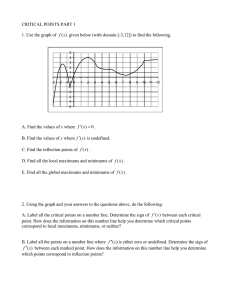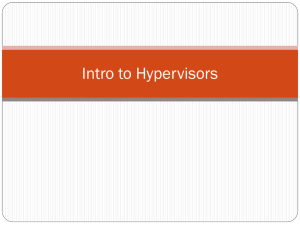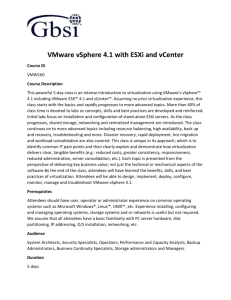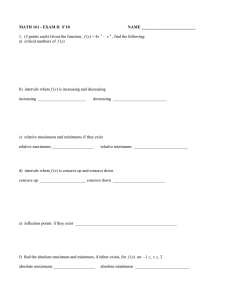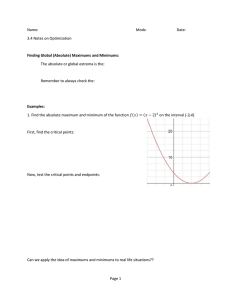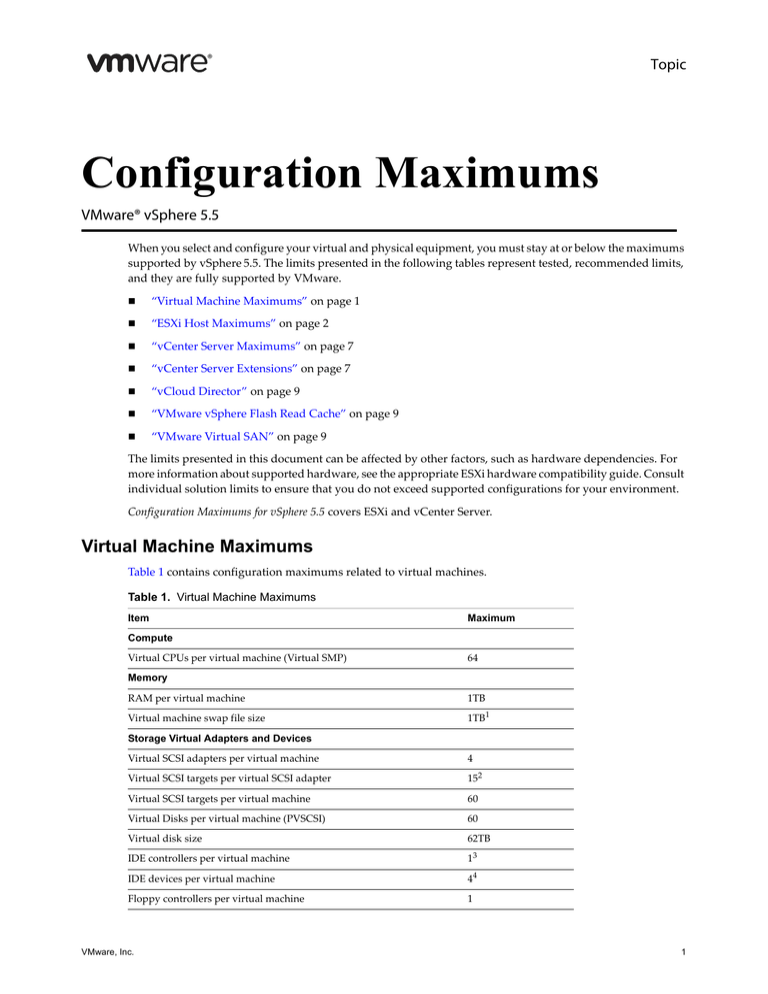
Topic
Configuration Maximums
VMware® vSphere 5.5
When you select and configure your virtual and physical equipment, you must stay at or below the maximums supported by vSphere 5.5. The limits presented in the following tables represent tested, recommended limits, and they are fully supported by VMware.
“Virtual Machine Maximums” on page 1
“ESXi Host Maximums” on page 2
“vCenter Server Maximums” on page 7
“vCenter Server Extensions” on page 7
“vCloud Director” on page 9
“VMware vSphere Flash Read Cache” on page 9
“VMware Virtual SAN” on page 9
The limits presented in this document can be affected by other factors, such as hardware dependencies. For more information about supported hardware, see the appropriate ESXi hardware compatibility guide. Consult individual solution limits to ensure that you do not exceed supported configurations for your environment.
Configuration Maximums for vSphere 5.5 covers ESXi and vCenter Server.
Virtual Machine Maximums
Table 1 contains configuration maximums related to virtual machines.
Table 1. Virtual Machine Maximums
Item
Maximum
Compute
Virtual CPUs per virtual machine (Virtual SMP)
64
Memory
RAM per virtual machine
1TB
Virtual machine swap file size
1TB1
Storage Virtual Adapters and Devices
Virtual SCSI adapters per virtual machine
4
Virtual SCSI targets per virtual SCSI adapter 152
Virtual SCSI targets per virtual machine
60
Virtual Disks per virtual machine (PVSCSI)
60
Virtual disk size
62TB
IDE controllers per virtual machine
13
IDE devices per virtual machine
44
Floppy controllers per virtual machine
1
VMware, Inc.
1
Configuration Maximums
Table 1. Virtual Machine Maximums (Continued)
Item
Maximum
Floppy devices per virtual machine
25
Virtual SATA adapters per virtual machine
4
Virtual SATA devices per virtual SATA adapter
304
Networking Virtual Devices
106
Virtual NICs per virtual machine
Virtual Peripheral Ports
USB host controllers per virtual machine
17
USB devices connected to a virtual machine
208
Parallel ports per virtual machine
3
Serial ports per virtual machine
4
Miscellaneous
Concurrent remote console connections to a virtual machine
40
Graphics video device
Video memory per virtual machine
512MB
1. VMFS3 with 1MB block maximum swap size is 255GB. Recommended solution is VMFS5, not VMFS3 with bigger block size.
2. Any combination of disk or VMDirectPath SCSI target.
3. Supports two channels (primary and secondary) each with a master and slave device.
4. Devices can be either CD‐ROM or disk.
5. BIOS is configured for one floppy device.
6. Any combination of supported virtual NICs.
7. USB 1.x, 2.x and 3.x supported. One USB host controller of each version 1.x, 2.x, or 3.x can be added at the same time.
8. Guest operating systems might have lower limits than allowed by vSphere.
ESXi Host Maximums
The following tables contain configuration maximums related to ESXi hosts.
“Compute Maximums” on page 2
“Memory Maximums” on page 3
“Storage Maximums” on page 3
“Networking Maximums” on page 5
“Cluster and Resource Pool Maximums” on page 6
Compute Maximums
Table 2 contains configuration maximums related to ESXi host compute resources.
Table 2. Compute Maximums
Item
Maximum
Host CPU maximums
Logical CPUs per host
320
NUMA Nodes per host
16
Virtual machine maximums
Virtual machines per host
512
Virtual CPUs per host
4096
VMware, Inc.
2
Configuration Maximums
Table 2. Compute Maximums (Continued)
Item
Maximum
Virtual CPUs per core
321
Fault Tolerance maximums
Virtual disks
16
Virtual CPUs per virtual machine
1
RAM per FT VM
64GB
Virtual machines per host
4
1. The achievable number of vCPUs per core depends on the workload and specifics of the hardware. For more information, see the latest version of Performance Best Practices for VMware vSphere.
Memory Maximums
Table 3 contains configuration maximums related to ESXi host memory.
Table 3. Memory Maximums
Item
Maximum
RAM per host
41TB
Number of swap files
1 per virtual machine
1. Up to 6TB is supported for ESXi 5.5 Update 2 and later.
Storage Maximums
Table 4 contains configuration maximums related to ESXi host storage.
Table 4. Storage Maximums
Item
Maximum
Virtual Disks
Virtual Disks per Host
2048
iSCSI Physical
LUNs per server
256
Qlogic 1Gb iSCSI HBA initiator ports per server
4
Broadcom 1Gb iSCSI HBA initiator ports per server
4
Broadcom 10Gb iSCSI HBA initiator ports per server
4
NICs that can be associated or port bound with the software iSCSI stack per server
8
Number of total paths on a server
1024
Number of paths to a LUN (software iSCSI and hardware iSCSI)
8
Qlogic iSCSI: dynamic targets per adapter port
64
Qlogic iSCSI: static targets per adapter port
62
Broadcom 1Gb iSCSI HBA targets per adapter port
641
Broadcom 10Gb iSCSI HBA targets per adapter port
128
Software iSCSI targets
2561
NAS2
NFS mounts per host
256
Fibre Channel
LUNs per host
VMware, Inc.
256
3
Configuration Maximums
Table 4. Storage Maximums (Continued)
Item
Maximum
LUN size
64TB
LUN ID
255
Number of paths to a LUN
32
Number of total paths on a server
1024
Number of HBAs of any type
8
HBA ports
16
Targets per HBA
256
FCoE
Software FCoE adapters
4
Common VMFS
Volume size
64TB5
Volumes per host
256
Hosts per volume
64
Powered on virtual machines per VMFS volume
2048
Concurrent vMotion operations per VMFS volume
128
VMFS3
Raw device mapping size (virtual and physical)
2TB minus 512 bytes
Block size 8MB
File size (1MB block size)
256GB
File size (2MB block size)
512GB
File size (4MB block size)
1TB
File size (8MB block size)
2TB minus 512 bytes
Files per volume
Approximately 30,720
VMFS5
Raw Device Mapping size (virtual compatibility)
62TB
Raw Device Mapping size (physical compatibility)
64TB
Block size
1MB3
File size
62TB
Files per volume
Approximately 130,690
1. The sum of static targets (manually assigned IP addresses) and dynamic targets (IP addresses assigned to discovered targets) may not exceed this number.
2. Contact your storage array vendor or NFS server vendor for information about the maximum NFS volume size.
3. 1MB is default block size. Upgraded VMFS5 volumes inherit the VMFS3 block size value.
4. Maximum file size for upgraded VMFS5 is 2TB minus 512 bytes, irrespective of the file system block size.
5. For VMFS3 volumes with 1MB block size, the maximum is 50TB.
VMware, Inc.
4
Configuration Maximums
Networking Maximums
The following limits represent achievable maximum configuration limits for networking in environments where no other more restrictive limits apply (for example, vCenter Server limits, the limits imposed by features such as HA or DRS, and other configurations that might impose restrictions must be considered when deploying large scale systems).
Table 5 contains configuration maximums related to ESXi host networking.
Table 5. Networking Maximums
Item
Maximum
Physical NICs
e1000e 1Gb Ethernet ports (Intel PCI‐e)
24
igb 1Gb Ethernet ports (Intel)
16
tg3 1Gb Ethernet ports (Broadcom)
32
bnx2 1Gb Ethernet ports (Broadcom)
16
nx_nic 10Gb Ethernet ports (NetXen)
8
be2net 10Gb Ethernet ports (Serverengines)
8
ixgbe 10Gb Ethernet ports (Intel)
8
bnx2x 10Gb Ethernet ports (Broadcom)
8
Infiniband ports (refer to VMware Community Support)
N/A1
Combination of 10Gb and 1Gb ethernet ports
Eight 10Gb and Four 1Gb ports
mlx4_en 40GB Ethernet Ports (Mellanox)
4
VMDirectPath limits
SR‐IOV Number of virtual functions
642
SR‐IOV Number of 10G pNICs
8
VMDirectPath PCI/PCIe devices per virtual machine
16
vSphere Standard and Distributed Switch
Total virtual network switch ports per host (VDS and VSS ports)
4096
Maximum active ports per host (VDS and VSS)
1016
Virtual network switch creation ports per standard switch
4088
Port groups per standard switch
512
Static/Dynamic port groups per distributed switch
6500
Ephemeral port groups per distributed switch
1016
Ports per distributed switch
60000
Distributed virtual network switch ports per vCenter
60000
Static/dynamic port groups per vCenter
10000
Ephemeral port groups per vCenter
1016
Distributed switches per vCenter
128
Distributed switches per host
16
VSS portgroups per host
1000
LACP ‐ LAGs per host
64
LACP ‐ uplink ports per LAG (Team)
32
Hosts per distributed switch
1000
VMware, Inc.
5
Configuration Maximums
Table 5. Networking Maximums (Continued)
Item
Maximum
NIOC resource pools per vDS
64
Link aggregation groups per vDS
64
1. Mellanox Technologies InfiniBand HCA device drivers are available directly from Mellanox Technologies. Go to the Mellanox Web site information about support status of InfiniBand HCAs with ESXi. http://www.mellanox.com
2. SR‐IOV supports up to 43 virtual functions on supported Intel NICs and up to 64 virtual functions on supported Emulex NICs. The actual number of virtual functions available for passthrough depends on the number of interrupts vectors required by each of them and on the hardware configuration of the host. Each ESXi host has a limited number of interrupt vectors. When the host boots, devices on the host such as storage controllers, physical network adapters, and USB controllers consume a subset of the total number of vectors. Depending upon the number of vectors these devices consume, the maximum number of potentially supported VFs could be reduced.
Cluster and Resource Pool Maximums
Table 6 contains configuration maximums related to ESXi host clusters and resource pools. Table 6. Cluster Maximums
Item
Maximum
Cluster (all clusters including HA and DRS)
Hosts per cluster
32
Virtual machines per cluster
4000
Virtual machines per host
512
Powered‐on virtual machine config files per datastore in an HA cluster1
2048
Resource Pool
Resource pools per host 1600
Children per resource pool 1024
Resource pool tree depth
82
Resource pools per cluster
1600
1. This limit does not apply to virtual disks. A virtual machine enabled with Fault Tolerance counts as two virtual machines.
2. Additional 4 resource pools are used by system internals.
Using Maximum Values for More than One Configuration Option
If any one of the configuration options listed in the above tables is used at its maximum limit value, the ESXi host and vCenter Server with default configuration should be able to withstand the values.
If more than one configuration options (such as number of virtual machines, number of LUNs, and number of VDS ports) are used at their maximum limit, some of the processes running on the host might run out of memory. This might cause the host to keep disconnecting from the vCenter Server. In such a case, you need to increase the memory pool for these host processes so that the host can withstand the workload you are planning. You need to increase your memory pool size in correlation to the number of configuration options you are using at the maximum value.
VMware, Inc.
6
Configuration Maximums
vCenter Server Maximums
Table 7 contains configuration maximums related to vCenter Server.
Table 7. vCenter Server Maximums
Item
Maximum
vCenter Server Scalability
Hosts per vCenter Server
1000
Powered‐on virtual machines per vCenter Server
10000
Registered virtual machines per vCenter Server
15000
Linked vCenter Servers
10
Hosts in linked vCenter Servers
3000
Powered‐on virtual machines in linked vCenter Servers
30000
Registered virtual machines in linked vCenter Servers
50000
Concurrent vSphere Client connections to vCenter Server
100
Concurrent vSphere Web Clients connections to vCenter Server
180
Number of host per datacenter
500
MAC addresses per vCenter Server (using default VMware OUI)
65536
User Interface
USB devices connected per vSphere Client
20
Concurrent operations
vMotion operations per host (1 Gb/s network)
4
vMotion operations per host (10 Gb/s network)
8
vMotion operations per datastore 128
Storage vMotion operations per host
2
Storage vMotion operations per datastore
8
vCenter Server Appliance
Hosts (with embedded vPostgres database)
100
Virtual machines (with embedded vPostgres database)
3000
Hosts (with Oracle database)
1000
Virtual machines (with Oracle database)
10000
vCenter Server Extensions
The following tables contain configuration maximums related to vCenter Server extensions.
“VMware vCenter Update Manager” on page 8
“VMware vCenter Orchestrator” on page 8
“Storage DRS” on page 8
VMware, Inc.
7
Configuration Maximums
VMware vCenter Update Manager
Table 8 contains configuration maximums for vCenter Update Manager.
Table 8. vCenter Update Manager Maximums
Item
Maximum
Concurrent Operations
VMware Tools scan per ESXi host
90
VMware Tools upgrade per ESXi host
24
Virtual machine hardware scan per host
90
Virtual machine hardware upgrade per host
24
VMware Tools scan per VUM server
90
VMware Tools upgrade per VUM server
75
Virtual machine hardware scan per VUM server
90
Virtual machine hardware upgrade per VUM server
75
ESXi host scan per VUM server
75
ESXi host remediation per VUM server
71
ESXi host upgrade per VUM server
71
ESXi host upgrade per cluster
1
Cisco VDS update and deployment
70
VMware vCenter Orchestrator
Table 9 contains configuration maximums for vCenter Orchestrator.
Table 9. vCenter Orchestrator Maximums
Item
Maximum
Connected vCenter Server systems
20
Connected ESXi instances
1280
Connected virtual machines
350001
Concurrent running workflows
300
1. 15000 per vCenter Orchestrator Cluster node.
Storage DRS
Table 10 contains configuration maximums for Storage DRS.
Table 10. Storage DRS
Item
Maximum
Virtual disks per datastore cluster
9000
Datastores per datastore cluster
64
Datastore clusters per vCenter
256
VMware, Inc.
8
Topic
vCloud Director
Table 11 contains configuration maximums related to vCloud Director. Table 11. vCloud Director Maximums
Item
Maximum
Registered virtual machines
50000
Powered‐On virtual machines
30000
Organizations
10000
Virtual machines per vApp
128
vApps per Organization
5000
Number of networks
10000
Hosts
3000
vCenter Servers
20
Virtual Data Centers
10000
Datastores
1024
Catalogs
10000
Media
1000
Users
25000
VMware vSphere Flash Read Cache
Table 12 contains configuration maximums related to Flash Read Cache.
Table 12. Flash Read Cache Maximums
Item
Maximum
Virtual flash resource per host
1
Maximum cache for each virtual disk
400GB
Cumulative cache configured per host (for all virtual disks)
2TB
Virtual disk size
16TB
Virtual host swap cache size
4TB
Flash devices per virtual flash resource
8
VMware Virtual SAN
Table 13 contains configuration maximums related to VMware Virtual SAN
Table 13. Virtual SAN Maximums.
Item
Maximum
Virtual SAN ESXi host
Virtual SAN disk groups per host
5
Magnetic disks per disk group
7
SSD disks per disk group
1
VMware, Inc.
9
Configuration Maximums
Item
Maximum
Spinning disks in all diskgroups per host
35
Components per Virtual SAN host
3000
Virtual SAN Cluster
Number of Virtual SAN nodes in a cluster
32
Number of datastores per cluster
1
Virtual SAN virtual machines
Virtual machines per host 1001
Virtual machines per cluster 32002
Virtual machine virtual disk size
2032GB
Virtual SAN VM Storage Policy
Disk stripes per object
12
Percentage of flash read cache reservation
100
Failure to tolerate 3
Percentage of object space reservation
100
Virtual Networking
Virtual SAN networks/physical network fabrics
2
1. On a 32 node cluster, number of virtual machines with VMware HA is 64.
2. On a 32 node cluster, number of virtual machines with VMware HA is 2048.
If you have comments about this documentation, submit your feedback to: docfeedback@vmware.com
VMware, Inc. 3401 Hillview Ave., Palo Alto, CA 94304 www.vmware.com
Copyright © 2013 VMware, Inc. All rights reserved. This product is protected by U.S. and international copyright and intellectual property laws. VMware products are covered by
one or more patents listed at http://www.vmware.com/go/patents. VMware is a registered trademark or trademark of VMware, Inc. in the United States and/or other
jurisdictions. All other marks and names mentioned herein may be trademarks of their respective companies.
Item: EN-0001293-03
10

